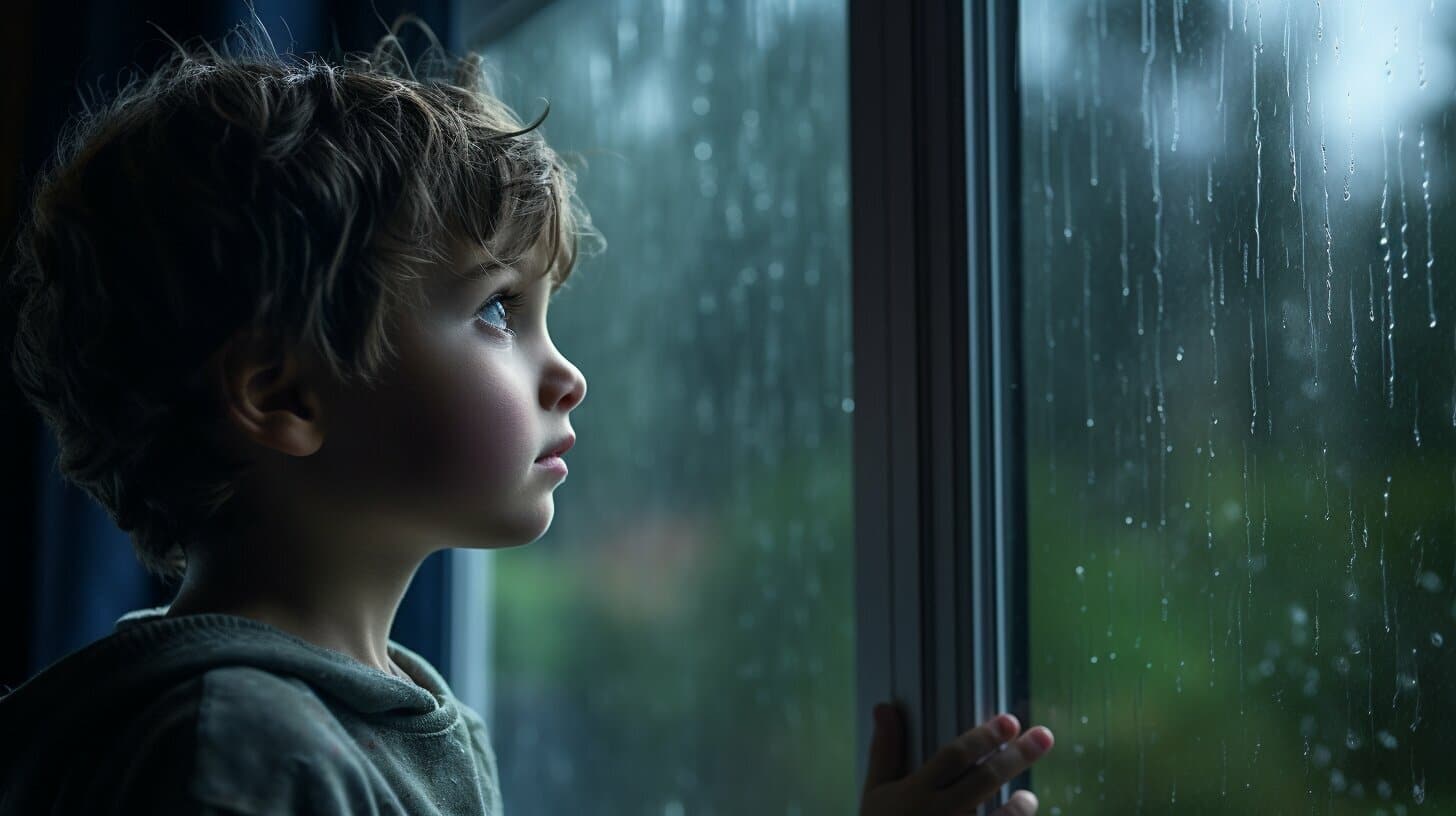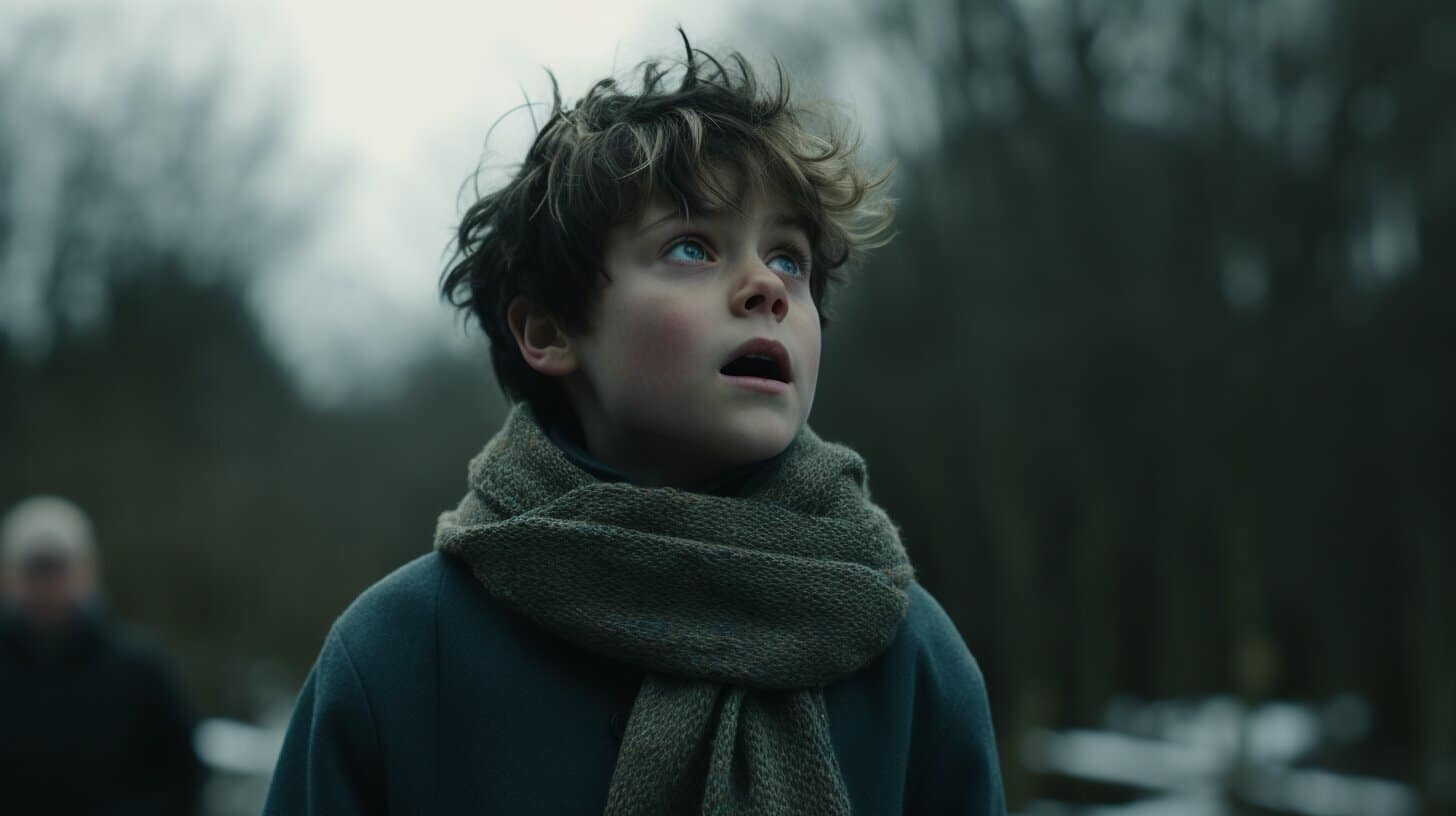Key Takeaways:
- Explaining surrealism to a child can be challenging but taking a fun and creative approach can help.
- Surrealism is an art movement that explores the world of dreams, the subconscious, and the imagination.
- Engaging your child’s imagination is key to helping them appreciate surrealism.
What is Surrealism?
If you want to explain surrealism to a child, it’s important to start with the basics. Surrealism is an art movement that explores the world of dreams, the subconscious, and the imagination. This means that instead of painting realistic pictures of the world around us, surrealistic artists create works that are more like dreams or fantasies. Surrealistic artwork often features unexpected and dreamlike imagery, such as melting clocks or floating objects. These images are meant to challenge our perceptions of reality and inspire us to think more creatively. Here’s a simple way to explain surrealism to a child: Imagine you’re dreaming, and in your dream, you see a giant banana wearing a top hat. That banana is an example of something surreal. Surrealism is like taking the strange and unexpected things we see in our dreams and turning them into art.
Famous Surrealist Artists
If you want to teach your child about surrealism, it’s important to introduce them to some of the movement’s famous artists. These artists brought their own unique style and approach to surrealism, and their works continue to inspire and captivate audiences today. Salvador Dali is perhaps the most well-known surrealistic artist, famous for his melting clocks and dreamlike landscapes. His works often include unexpected elements and an almost hypnotic quality. Another artist worth mentioning is Rene Magritte. Magritte’s paintings often feature everyday objects in bizarre or unexpected contexts, challenging our assumptions about reality. Frida Kahlo is another famous surrealist artist, known for her self-portraits that explore the complexities of identity and emotions. These are just a few examples of the many talented artists who helped pioneer the surrealism movement. By introducing your child to these artists, you can help them understand and appreciate the unique qualities of surrealistic art.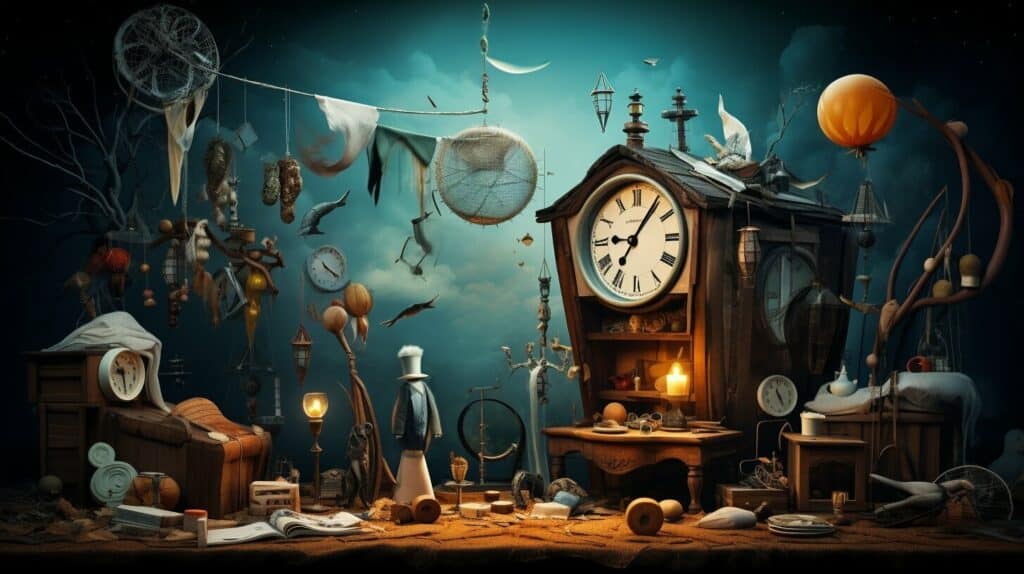
Elements of Surrealism
As we mentioned earlier, surrealism is an art movement that explores the world of dreams, the subconscious, and the imagination. It’s characterized by unexpected imagery and unusual settings that challenge our perceptions of reality. In this section, we will discuss the key elements of surrealism in more detail.Unexpected Combinations
Surrealistic art often features unexpected combinations of objects or settings that create a sense of surprise or confusion. For example, Rene Magritte’s famous painting “The Son of Man” features a man with an apple for a face. This unexpected combination of human and fruit elements challenges our perceptions and creates a dreamlike effect. Another example is Salvador Dali’s “The Persistence of Memory,” which features melting clocks draped over surreal landscapes. This unexpected combination of reality and surrealism creates a jarring effect that invites us to question our understanding of time and space.
Another example is Salvador Dali’s “The Persistence of Memory,” which features melting clocks draped over surreal landscapes. This unexpected combination of reality and surrealism creates a jarring effect that invites us to question our understanding of time and space.
Distorted Perspectives
Distorted perspectives are another common element of surrealistic art. Artists use distorted proportions and impossible shapes to create a sense of disorientation and unease. For example, in M.C. Escher’s “Relativity,” the impossible staircase creates a confusing and unsettling effect that challenges our understanding of gravity and space. Similarly, in Frida Kahlo’s “The Two Fridas,” the distorted perspective and surreal colors create a sense of emotional turmoil and instability.
Similarly, in Frida Kahlo’s “The Two Fridas,” the distorted perspective and surreal colors create a sense of emotional turmoil and instability.
Dreamlike Settings
Surrealistic art often features dreamlike settings that challenge our understanding of reality. These settings can be fantastical or otherworldly, inviting us to explore the depths of our subconscious. For example, in Max Ernst’s “The Elephant Celebes,” the surreal landscape is a mix of human and animal features, creating an otherworldly atmosphere that invites us to explore our own creativity and imagination. These elements of surrealism can be seen in many famous works of art and can inspire children to explore their own creativity and imagination.
These elements of surrealism can be seen in many famous works of art and can inspire children to explore their own creativity and imagination.
Everyday Surrealism
In addition to exploring surrealism through art, literature, and music, you can also introduce your child to the surreal world around them. Encourage them to look for unexpected and unusual things in their daily life, such as strange combinations, distorted perspectives, and unusual settings. By doing so, you can help them develop an eye for surrealism and appreciate the art movement on a deeper level. For example, take a walk with your child and ask them to point out anything they see that strikes them as surreal. This could be a tree that looks like it’s growing upside down, a cloud that resembles a different object, or a reflection that looks distorted. Encourage them to use their imagination and see the world in a new way.
For example, take a walk with your child and ask them to point out anything they see that strikes them as surreal. This could be a tree that looks like it’s growing upside down, a cloud that resembles a different object, or a reflection that looks distorted. Encourage them to use their imagination and see the world in a new way.
Creating Surreal Art
If your child is inspired by surrealism, encourage them to create their own surreal artwork. Surrealism is all about using your imagination and experimenting with unexpected combinations and perspectives. One fun project is to create a collage using magazine cut-outs. Encourage your child to look for images and words that seem completely unrelated and combine them in a creative way. They can also draw or paint their own surreal scenes, using unusual color combinations and distorted perspectives. Another project idea is to create a “surreal sculpture” using found objects around the house. Challenge your child to combine objects in unexpected ways, such as a teapot with a bicycle wheel, or a shoe with a feather. Encourage them to use their imagination and have fun with it! Remember, there are no right or wrong ways to create surreal art. Encourage your child to use their imagination and experiment freely. You might be surprised at the creative and wondrous things they come up with!
Remember, there are no right or wrong ways to create surreal art. Encourage your child to use their imagination and experiment freely. You might be surprised at the creative and wondrous things they come up with!
Exploring Surrealism Through Literature
Introducing children to surrealistic literature can be a great way to spark their imagination and curiosity. There are many books that feature surreal elements that children will enjoy and understand. Alice in Wonderland by Lewis Carroll is a classic example of surrealism in literature. It tells the story of a young girl who falls down a rabbit hole into a fantastical world with strange and unpredictable characters. Children will love the whimsy and creativity in this story. The Cat in the Hat by Dr. Seuss is another book that features surreal elements. It tells the story of a mischievous cat who visits two children and creates chaos in their home. The vivid and imaginative illustrations and playful rhymes make this book a favorite among children. Where the Wild Things Are by Maurice Sendak is a beloved children’s book that explores the world of dreams and imagination. It tells the story of a young boy named Max who travels to a fantastical world of monsters. The rich illustrations and imaginative storytelling make this book a classic. Encourage your child to explore surrealism through reading and storytelling. Ask them questions about the surreal elements they notice in the books they read and encourage them to use their imagination to create their own surreal stories.
Surrealism in Movies and Animation
Movies and animations are great mediums to showcase surrealism to children. “Alice in Wonderland” and “The Nightmare Before Christmas” are perfect examples of unforgettable movies that are surrealistic in their storytelling. The use of unexpected and dreamlike imagery in these movies provides an excellent opportunity for children to identify and understand the elements of surrealism. In “Alice in Wonderland,” Alice falls into a rabbit hole and enters a world full of bizarre characters and situations. The story features strange juxtapositions, unusual settings, and distorted perspectives that are typical of surrealistic art. Similarly, “The Nightmare Before Christmas” is a stop-motion animation that tells the story of Jack Skellington, the Pumpkin King of Halloween Town. He discovers Christmas Town and decides to celebrate Christmas in his own way, leading to strange and unexpected situations that are typical of surrealism. After watching these movies, encourage your child to discuss the surreal elements they noticed. Ask them questions like, “What was the strangest or funniest scene in the movie?” or “What did you think about the way the characters looked and acted?” This will help them develop their imagination and observational skills while also honing their understanding of surrealism.
After watching these movies, encourage your child to discuss the surreal elements they noticed. Ask them questions like, “What was the strangest or funniest scene in the movie?” or “What did you think about the way the characters looked and acted?” This will help them develop their imagination and observational skills while also honing their understanding of surrealism.
Visiting Surrealism Exhibitions
One of the best ways to introduce your child to surrealism is by taking them to a museum or exhibition that features surrealistic artwork. Seeing the artwork in person can be an exciting and enriching experience for children, as they can engage with the pieces on a deeper level and appreciate the unique elements of surrealism. When planning your visit, consider your child’s age and attention span. It may be helpful to research the exhibition beforehand and highlight specific pieces that may interest your child. You can also prepare them by discussing surrealism and the elements they may notice in the artwork.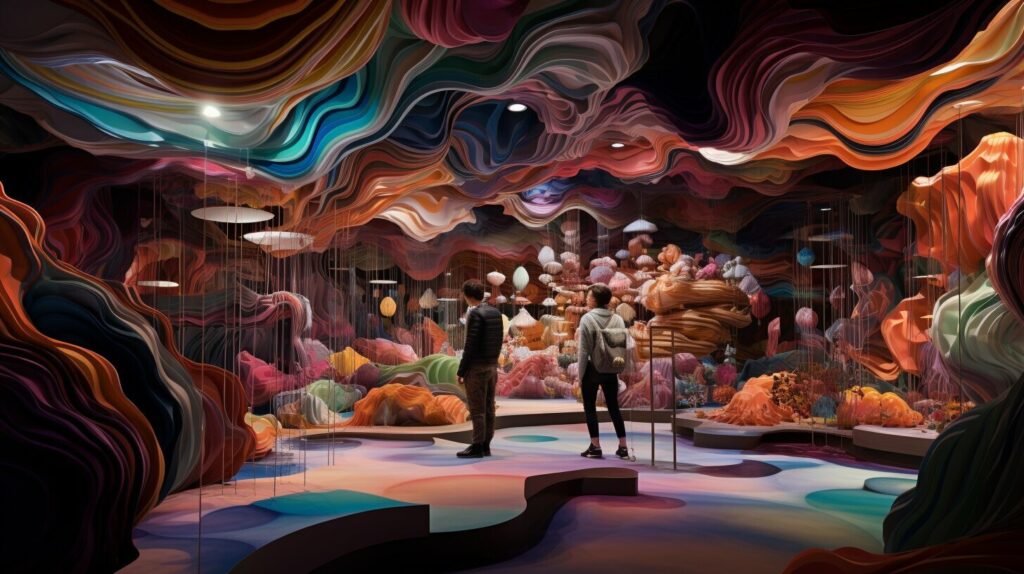 During your visit, encourage your child to ask questions, share their thoughts and observations, and explore their own interpretations of the artwork. You can also use the opportunity to build their vocabulary by introducing new words like “juxtaposition” and “distorted perspective.”
Remember to respect your child’s pace and interests. If they become overwhelmed or disinterested, take breaks or move on to another piece. Overall, visiting a surrealism exhibition can be a valuable and memorable experience for your child, sparking their curiosity and love for art.
During your visit, encourage your child to ask questions, share their thoughts and observations, and explore their own interpretations of the artwork. You can also use the opportunity to build their vocabulary by introducing new words like “juxtaposition” and “distorted perspective.”
Remember to respect your child’s pace and interests. If they become overwhelmed or disinterested, take breaks or move on to another piece. Overall, visiting a surrealism exhibition can be a valuable and memorable experience for your child, sparking their curiosity and love for art.
Surrealism in Music
Did you know that surrealism isn’t just an art movement, but it’s also represented in music? Yes, that’s right! Just like in art, surrealistic elements can be found in music as well. Musicians like The Beatles and David Bowie have incorporated surrealism into their music and lyrics, making it a fun and exciting way to introduce surrealism to children. The Beatles’ “Lucy in the Sky with Diamonds” is a classic example of surrealism in music. The song’s dreamlike lyrics and trippy sound effects transport the listener to a surreal world, full of colorful imagery and unexpected twists. David Bowie’s “Life on Mars” is another song that showcases surrealistic elements, with its vivid storytelling and imaginative lyrics. Introduce your child to surrealistic music and encourage them to listen closely for the surreal elements. You can even have them create their own surrealist-inspired playlist or use music as inspiration for their own artwork.
Discussing Surrealism with Your Child
When introducing your child to surrealism, it’s important to encourage them to explore their own ideas and interpretations. Ask open-ended questions that allow them to express their thoughts and feelings about the artwork or literature. Listen actively to their responses and avoid dismissing or judging their ideas. Try to create a safe and judgment-free space for discussion. Let your child know that their ideas and opinions are valued and appreciated. Remember, there is no right or wrong interpretation of surrealism, so allow them to explore their imagination freely. You can also encourage your child to create their own surreal artwork or writing. Provide them with the tools and materials they need and allow them to experiment with unexpected combinations and perspectives. Support their creativity and offer positive feedback on their work. Remember, discussing surrealism with your child can be a fun and exciting way to foster their creative thinking and imagination. Keep an open mind and enjoy the journey together.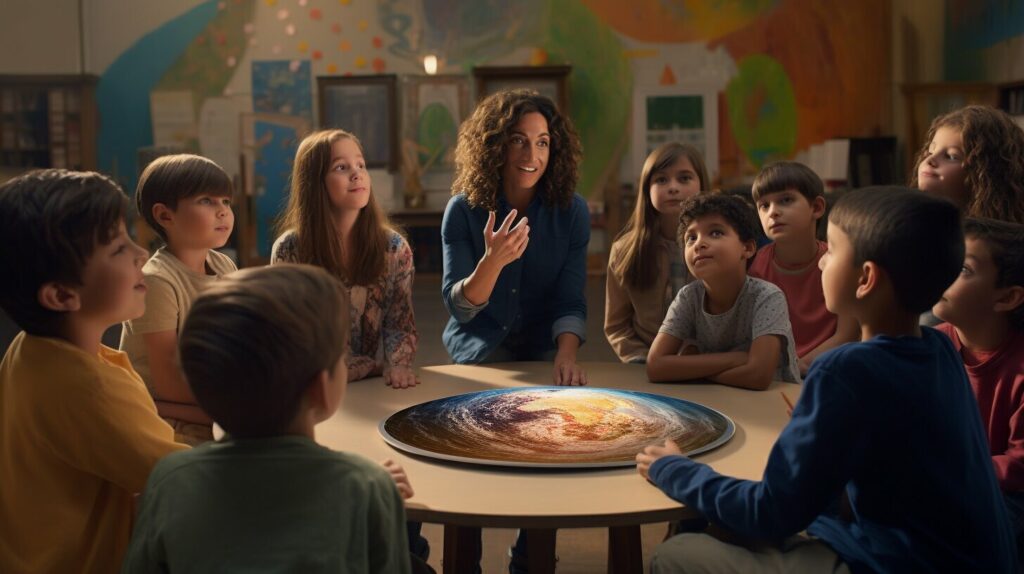
Conclusion
Overall, teaching your child about surrealism can be a fun and exciting journey of exploration and creativity. By introducing them to the concept of exploring the world of dreams, the subconscious, and the imagination through art, literature, music, and movies, you can inspire a love for this unique art movement.Keep Nurturing Their Interest
Remember, the key to nurturing your child’s interest in surrealism is to provide opportunities for creative expression and imagination. Encourage them to create their own surreal artwork, read surrealistic literature, watch movies with surreal elements, and listen to surrealistic music.Discuss and Explore Together
As you and your child explore surrealism, make sure to have meaningful discussions and create a safe and judgment-free space for exploration and interpretation. Ask open-ended questions, listen actively, and encourage their exploration and interpretation of surrealism. Help your child see the surreal in everyday life by encouraging them to look for strange juxtapositions or unexpected situations in their surroundings.Visit Surrealism Exhibitions
If possible, consider visiting surrealism exhibitions or museums with your child. Seeing surrealistic artwork in person can enhance their understanding and appreciation of the art movement. During your visit, engage your child in conversation about the artwork and encourage their curiosity. By following these tips, you can help your child develop a deeper understanding and appreciation of surrealism, while encouraging their creativity and imagination.Can I Use Similar Techniques to Explain Equations to a Child as I Do to Explain Surrealism?
Explaining equations to a child can be similar to explaining surrealism, despite the vast differences between the two concepts. Although surrealism involves abstract art and equations deal with numbers and symbols, employing simple analogies, visual aids, and relatable examples can make the process effective. By breaking down complex equations into smaller, understandable parts, you can gradually introduce mathematical concepts to children. Explore creative ways to make math enjoyable, engaging, and accessible for young minds. Discover efficient techniques on how to teach equations to kids.





